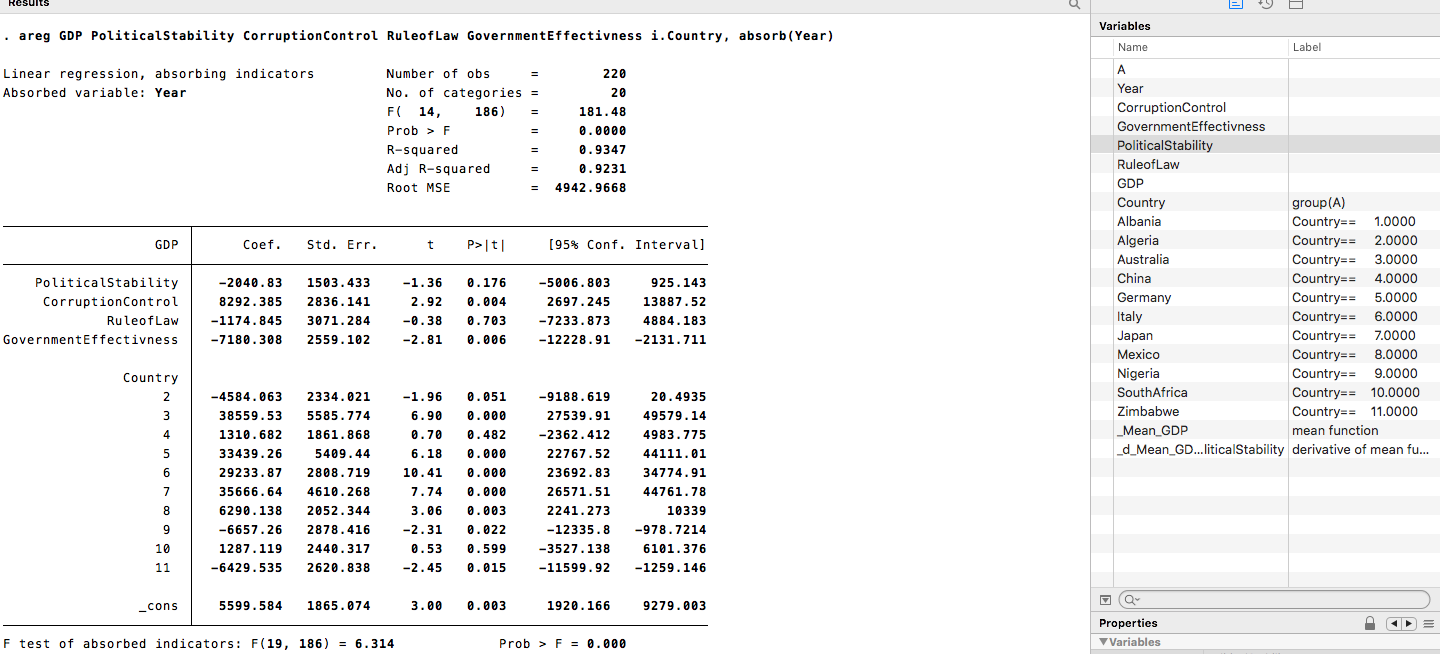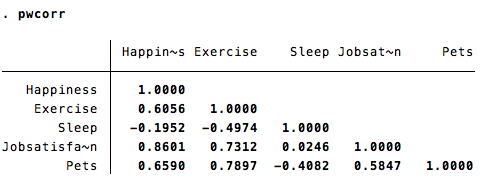

An alternative is to use a different distribution family, a different link or both in the gsem model, but specifying a random factor to measure association between the two analytes' values becomes a bit trickier. For the weighted case there is no commonly accepted weighted Spearman correlation coefficient. If no variables are specified (e.g., correlate var1 var2 var3 versus just correlate), Stata will display a correlation matrix for all nonstring variables: If instead you specify variables after correlate, only those variables will be displayed. If that's what's happening in your data, then you might need to look into transformations (e.g., logarithmic) if you want to use a linear model as below (in terms of the user's manual, an "uncensored gaussian response with the identity link"). Correlation is performed using the correlate command. One thing that you'll need to keep in mind is that typical clinical laboratory test results will often be distributed nonnormally, especially if something is going on with the patient's health. You can change that (splines, random slopes etc.) to suit your data.

In the illustration, I've used a simple linear relationship between time and the analytes' values. You can see what happens to the covariance (and the variances) for the two analytes ( value1 and value2 in the illustrative example). I've attached the do-file, itself, so that you can use it to play around with the degree of correlation between the two analyte values-just vary the value of the local macro named covariance. 1A revised edition of this book was published by Stata Press in 2013. (Sociological Methodology 1977) to analyze the concept of individuals’ alienation. If no variables are specified (e.g., correlate var1 var2 var3 versus just correlate ), Stata will. Structural Equation Modeling using Stata.1 This is a model developed by Wheaton et al. Researchers should conduct power calculations during research design to determine sample size, power, and/or MDES, all of which. I've shown an example below (start at the "Begin here" comment the beginning of the do-file just creates a dataset for illustration, one that simulates the characteristics of the one you describe, i.e., a thousand patients with repeated measurements of two clinical laboratory analytes, time intervals not the same for each patient, number of measurements not the same for each patient). Correlation is performed using the correlate command. Power calculations indicate the minimum sample size needed to provide precise estimates of the program impact they can also be used to compute power and minimum detectable effect size. It looks like your best bet would be to use Stata's Structural Equation Modeling (SEM) capabilities. About Press Copyright Contact us Creators Advertise Developers Terms Privacy Policy & Safety How YouTube works Test new features Press Copyright Contact us Creators.


 0 kommentar(er)
0 kommentar(er)
